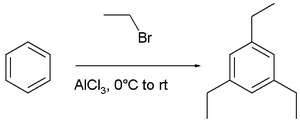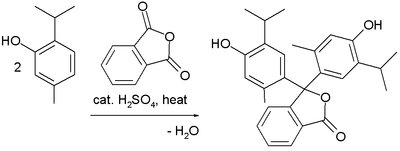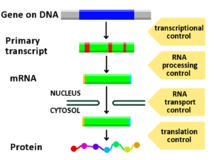From Wikipedia, the free encyclopedia
Regulation of gene expression by a hormone receptor
Diagram showing at which stages in the DNA-mRNA-protein pathway expression can be controlled
Regulation of gene expression includes a wide range of mechanisms that are used by cells to increase or decrease the production of specific
gene products (
protein or
RNA), and is informally termed
gene regulation. Sophisticated programs of
gene expression are widely observed in biology, for example to trigger
developmental pathways, respond to environmental stimuli, or adapt to new food sources. Virtually any step of gene expression can be modulated, from
transcriptional initiation, to
RNA processing, and to the
post-translational modification of a protein. Often, one gene regulator controls another, and so on, in a
gene regulatory network.
Gene regulation is essential for
viruses,
prokaryotes and
eukaryotes as it increases the versatility and adaptability of an
organism by allowing the cell to express protein when needed. Although as early as 1951,
Barbara McClintock showed interaction between two genetic loci, Activator (
Ac) and Dissociator (
Ds),
in the color formation of maize seeds, the first discovery of a gene
regulation system is widely considered to be the identification in 1961
of the
lac operon, discovered by
François Jacob and
Jacques Monod, in which some enzymes involved in
lactose metabolism are expressed by
E. coli only in the presence of lactose and absence of glucose.
In multicellular organisms, gene regulation drives
cellular differentiation and
morphogenesis in the embryo, leading to the creation of different cell types that possess different gene expression profiles from the same
genome sequence. This explains how
evolution actually works at a
molecular level, and is central to the science of
evolutionary developmental biology ("evo-devo").
The initiating event leading to a change in gene expression includes activation or deactivation of
receptors.
Regulated stages of gene expression
Any step of gene expression may be modulated, from the DNA-RNA
transcription step to
post-translational modification
of a protein. The following is a list of stages where gene expression
is regulated, the most extensively utilised point is Transcription
Initiation:
Modification of DNA
In
eukaryotes, the accessibility of large regions of DNA can depend on its
chromatin structure, which can be altered as a result of
histone modifications directed by
DNA methylation,
ncRNA, or
DNA-binding protein.
Hence these modifications may up or down regulate the expression of a
gene. Some of these modifications that regulate gene expression are
inheritable and are referred to as
epigenetic regulation.
Structural
Transcription
of DNA is dictated by its structure. In general, the density of its
packing is indicative of the frequency of transcription. Octameric
protein complexes called
nucleosomes are responsible for the amount of
supercoiling of DNA, and these complexes can be temporarily modified by processes such as
phosphorylation or more permanently modified by processes such as
methylation. Such modifications are considered to be responsible for more or less permanent changes in gene expression levels.
[1]
Chemical
Methylation of DNA
is a common method of gene silencing. DNA is typically methylated by
methyltransferase enzymes on cytosine nucleotides in a CpG dinucleotide
sequence (also called "
CpG islands"
when densely clustered). Analysis of the pattern of methylation in a
given region of DNA (which can be a promoter) can be achieved through a
method called bisulfite mapping. Methylated cytosine residues are
unchanged by the treatment, whereas unmethylated ones are changed to
uracil. The differences are analyzed by DNA sequencing or by methods
developed to quantify SNPs, such as
Pyrosequencing (
Biotage) or MassArray (
Sequenom),
measuring the relative amounts of C/T at the CG dinucleotide. Abnormal
methylation patterns are thought to be involved in oncogenesis.
[2]
Histone acetylation is also an important process in transcription.
Histone acetyltransferase enzymes (HATs) such as
CREB-binding protein
also dissociate the DNA from the histone complex, allowing
transcription to proceed. Often, DNA methylation and histone
deacetylation work together in
gene silencing. The combination of the two seems to be a signal for DNA to be packed more densely, lowering gene expression.
[citation needed]
Regulation of transcription
1: RNA Polymerase, 2: Repressor, 3: Promoter, 4: Operator, 5: Lactose, 6: lacZ, 7: lacY, 8: lacA. Top:
The gene is essentially turned off. There is no lactose to inhibit the
repressor, so the repressor binds to the operator, which obstructs the
RNA polymerase from binding to the promoter and making lactase. Bottom:
The gene is turned on. Lactose is inhibiting the repressor, allowing
the RNA polymerase to bind with the promoter, and express the genes,
which synthesize lactase. Eventually, the lactase will digest all of the
lactose, until there is none to bind to the repressor. The repressor
will then bind to the operator, stopping the manufacture of lactase.
Regulation of transcription thus controls when transcription occurs and how much RNA is created. Transcription of a gene by
RNA polymerase can be regulated by several mechanisms.
Specificity factors alter the specificity of RNA polymerase for a given
promoter or set of promoters, making it more or less likely to bind to them (i.e.,
sigma factors used in
prokaryotic transcription).
Repressors bind to the
Operator,
coding sequences on the DNA strand that are close to or overlapping the
promoter region, impeding RNA polymerase's progress along the strand,
thus impeding the expression of the gene.The image to the right
demonstrates regulation by a repressor in the lac operon.
General transcription factors position RNA polymerase at the start of a protein-coding sequence and then release the polymerase to transcribe the mRNA.
Activators enhance the interaction between RNA polymerase and a particular
promoter,
encouraging the expression of the gene. Activators do this by
increasing the attraction of RNA polymerase for the promoter, through
interactions with subunits of the RNA polymerase or indirectly by
changing the structure of the DNA.
Enhancers
are sites on the DNA helix that are bound by activators in order to
loop the DNA bringing a specific promoter to the initiation complex.
Enhancers are much more common in eukaryotes than prokaryotes, where
only a few examples exist (to date).
[3]
Silencers are regions of DNA sequences that, when bound by particular transcription factors, can silence expression of the gene.
Regulation of transcription in cancer
In vertebrates, the majority of gene
promoters contain a
CpG island with numerous
CpG sites.
[4] When many of a gene's promoter CpG sites are
methylated the gene becomes silenced.
[5] Colorectal cancers typically have 3 to 6
driver mutations and 33 to 66
hitchhiker or passenger mutations.
[6]
However, transcriptional silencing may be of more importance than
mutation in causing progression to cancer. For example, in colorectal
cancers about 600 to 800 genes are transcriptionally silenced by CpG
island methylation (see
regulation of transcription in cancer). Transcriptional repression in cancer can also occur by other
epigenetic mechanisms, such as altered expression of
microRNAs.
[7] In breast cancer, transcriptional repression of
BRCA1 may occur more frequently by over-expressed microRNA-182 than by hypermethylation of the BRCA1 promoter (see
Low expression of BRCA1 in breast and ovarian cancers).
Regulation of transcription in addiction
One
of the cardinal features of addiction is its persistence. The
persistent behavioral changes appear to be due to long-lasting changes,
resulting from
epigenetic alterations affecting gene expression, within particular regions of the brain.
[8] Drugs of abuse cause three types of epigenetic alteration in the brain. These are (1)
histone acetylations and
histone methylations, (2) DNA methylation at
CpG sites, and (3) epigenetic
downregulation or upregulation of
microRNAs.
[8][9] (See
Epigenetics of cocaine addiction for some details.)
Chronic nicotine intake in mice alters brain cell epigenetic control of gene expression through
acetylation of histones. This increases expression in the brain of the protein FosB, important in addiction.
[10]
Cigarette addiction was also studied in about 16,000 humans,
including never smokers, current smokers, and those who had quit smoking
for up to 30 years.
[11] In blood cells, more than 18,000
CpG sites
(of the roughly 450,000 analyzed CpG sites in the genome) had
frequently altered methylation among current smokers. These CpG sites
occurred in over 7,000 genes, or roughly a third of known human genes.
The majority of the differentially methylated
CpG sites
returned to the level of never-smokers within five years of smoking
cessation. However, 2,568 CpGs among 942 genes remained differentially
methylated in former versus never smokers. Such remaining epigenetic
changes can be viewed as “molecular scars”
[9] that may affect gene expression.
In rodent models, drugs of abuse, including cocaine,
[12] methampheamine,
[13][14] alcohol
[15] and tobacco smoke products,
[16]
all cause DNA damage in the brain. During repair of DNA damages some
individual repair events can alter the methylation of DNA and/or the
acetylations or methylations of histones at the sites of damage, and
thus can contribute to leaving an epigenetic scar on chromatin.
[17]
Such epigenetic scars likely contribute to the persistent epigenetic changes found in addiction.
Post-transcriptional regulation
After the DNA is transcribed and mRNA is formed, there must be some
sort of regulation on how much the mRNA is translated into proteins.
Cells do this by modulating the capping, splicing, addition of a Poly(A)
Tail, the sequence-specific nuclear export rates, and, in several
contexts, sequestration of the RNA transcript. These processes occur in
eukaryotes but not in prokaryotes. This modulation is a result of a
protein or transcript that, in turn, is regulated and may have an
affinity for certain sequences.
Three prime untranslated regions and microRNAs
Three prime untranslated regions (3'-UTRs) of
messenger RNAs (mRNAs) often contain regulatory sequences that post-transcriptionally influence gene expression.
[18] Such 3'-UTRs often contain both binding sites for
microRNAs
(miRNAs) as well as for regulatory proteins. By binding to specific
sites within the 3'-UTR, miRNAs can decrease gene expression of various
mRNAs by either inhibiting translation or directly causing degradation
of the transcript. The 3'-UTR also may have silencer regions that bind
repressor proteins that inhibit the expression of a mRNA.
The 3'-UTR often contains
miRNA response elements (MREs).
MREs are sequences to which miRNAs bind. These are prevalent motifs
within 3'-UTRs. Among all regulatory motifs within the 3'-UTRs (e.g.
including silencer regions), MREs make up about half of the motifs.
As of 2014, the
miRBase web site,
[19] an archive of miRNA
sequences
and annotations, listed 28,645 entries in 233 biologic species. Of
these, 1,881 miRNAs were in annotated human miRNA loci. miRNAs were
predicted to have an average of about four hundred target mRNAs
(affecting expression of several hundred genes).
[20] Freidman et al.
[20]
estimate that >45,000 miRNA target sites within human mRNA 3'-UTRs
are conserved above background levels, and >60% of human
protein-coding genes have been under selective pressure to maintain
pairing to miRNAs.
Direct experiments show that a single miRNA can reduce the stability of hundreds of unique mRNAs.
[21]
Other experiments show that a single miRNA may repress the production
of hundreds of proteins, but that this repression often is relatively
mild (less than 2-fold).
[22][23]
The effects of miRNA dysregulation of gene expression seem to be important in cancer.
[24] For instance, in gastrointestinal cancers, a 2015 paper identified nine miRNAs as
epigenetically altered and effective in down-regulating DNA repair enzymes.
[25]
The effects of miRNA dysregulation of gene expression also seem to be important in neuropsychiatric disorders, such as
schizophrenia,
bipolar disorder,
major depressive disorder,
Parkinson's disease,
Alzheimer's disease and
autism spectrum disorders.
[26][27][28]
Regulation of translation
The translation of mRNA can also be controlled by a number of
mechanisms, mostly at the level of initiation. Recruitment of the small
ribosomal subunit can indeed be modulated by mRNA secondary structure,
antisense RNA binding, or protein binding. In both prokaryotes and
eukaryotes, a large number of RNA binding proteins exist, which often
are directed to their target sequence by the secondary structure of the
transcript, which may change depending on certain conditions, such as
temperature or presence of a ligand (aptamer). Some transcripts act as
ribozymes and self-regulate their expression.
Examples of gene regulation
- Enzyme induction is a process in which a molecule (e.g., a drug) induces (i.e., initiates or enhances) the expression of an enzyme.
- The induction of heat shock proteins in the fruit fly Drosophila melanogaster.
- The Lac operon is an interesting example of how gene expression can be regulated.
- Viruses, despite having only a few genes, possess mechanisms to
regulate their gene expression, typically into an early and late phase,
using collinear systems regulated by anti-terminators (lambda phage) or splicing modulators (HIV).
- Gal4
is a transcriptional activator that controls the expression of GAL1,
GAL7, and GAL10 (all of which code for the metabolic of galactose in
yeast). The GAL4/UAS system has been used in a variety of organisms across various phyla to study gene expression.[29]
Developmental biology
A large number of studied regulatory systems come from
developmental biology. Examples include:
- The colinearity of the Hox gene cluster with their nested antero-posterior patterning
- Pattern generation of the hand (digits - interdigits): the gradient of sonic hedgehog (secreted inducing factor) from the zone of polarizing activity
in the limb, which creates a gradient of active Gli3, which activates
Gremlin, which inhibits BMPs also secreted in the limb, results in the
formation of an alternating pattern of activity as a result of this reaction-diffusion system.
- Somitogenesis is the creation of segments (somites) from a uniform
tissue (Pre-somitic Mesoderm). They are formed sequentially from
anterior to posterior. This is achieved in amniotes possibly by means of
two opposing gradients, Retinoic acid in the anterior (wavefront) and
Wnt and Fgf in the posterior, coupled to an oscillating pattern
(segmentation clock) composed of FGF + Notch and Wnt in antiphase.[30]
- Sex determination in the soma of a Drosophila requires the sensing of the ratio of autosomal genes to sex chromosome-encoded
genes, which results in the production of sexless splicing factor in
females, resulting in the female isoform of doublesex.[31]
Circuitry
Up-regulation and down-regulation
Up-regulation
is a process that occurs within a cell triggered by a signal
(originating internal or external to the cell), which results in
increased expression of one or more genes and as a result the protein(s)
encoded by those genes. Conversely, down-regulation is a process
resulting in decreased gene and corresponding protein expression.
- Up-regulation
occurs, for example, when a cell is deficient in some kind of receptor.
In this case, more receptor protein is synthesized and transported to
the membrane of the cell and, thus, the sensitivity of the cell is
brought back to normal, reestablishing homeostasis.
- Down-regulation occurs, for example, when a cell is overstimulated by a neurotransmitter, hormone,
or drug for a prolonged period of time, and the expression of the
receptor protein is decreased in order to protect the cell (see also tachyphylaxis).
Inducible vs. repressible systems
Gene Regulation can be summarized by the response of the respective system:
- Inducible systems - An inducible system is off unless there is
the presence of some molecule (called an inducer) that allows for gene
expression. The molecule is said to "induce expression". The manner by
which this happens is dependent on the control mechanisms as well as
differences between prokaryotic and eukaryotic cells.
- Repressible systems - A repressible system is on except in the
presence of some molecule (called a corepressor) that suppresses gene
expression. The molecule is said to "repress expression". The manner by
which this happens is dependent on the control mechanisms as well as
differences between prokaryotic and eukaryotic cells.
The
GAL4/UAS system is an example of both an inducible and repressible system.
Gal4
binds an upstream activation sequence (UAS) to activate the
transcription of the GAL1/GAL7/GAL10 cassette. On the other hand, a
MIG1 response to the presence of glucose can inhibit GAL4 and therefore stop the expression of the GAL1/GAL7/GAL10 cassette.
[32]
Theoretical circuits
- Repressor/Inducer: an activation of a sensor results in the change of expression of a gene
- negative feedback: the gene product downregulates its own production directly or indirectly, which can result in
- keeping transcript levels constant/proportional to a factor
- inhibition of run-away reactions when coupled with a positive feedback loop
- creating an oscillator by taking advantage in the time delay of
transcription and translation, given that the mRNA and protein half-life
is shorter
- positive feedback: the gene product upregulates its own production directly or indirectly, which can result in
- signal amplification
- bistable switches when two genes inhibit each other and both have positive feedback
- pattern generation
Study methods
In general, most experiments investigating differential expression
used whole cell extracts of RNA, called steady-state levels, to
determine which genes changed and by how much they did. These are,
however, not informative of where the regulation has occurred and may
actually mask conflicting regulatory processes (
see post-transcriptional regulation), but it is still the most commonly analysed (
quantitative PCR and
DNA microarray).
When studying gene expression, there are several methods to look at the various stages. In eukaryotes these include:
- The local chromatin environment of the region can be determined by ChIP-chip analysis by pulling down RNA Polymerase II, Histone 3 modifications, Trithorax-group protein, Polycomb-group protein, or any other DNA-binding element to which a good antibody is available.
- Epistatic interactions can be investigated by synthetic genetic array analysis
- Due to post-transcriptional regulation, transcription rates and
total RNA levels differ significantly. To measure the transcription
rates nuclear run-on assays can be done and newer high-throughput methods are being developed, using thiol labelling instead of radioactivity.[33]
- Only 5% of the RNA polymerised in the nucleus actually exits,[34] and not only introns, abortive products,
and non-sense transcripts are degradated. Therefore, the differences
in nuclear and cytoplasmic levels can be see by separating the two
fractions by gentle lysis.[35]
- Alternative splicing can be analysed with a splicing array or with a tiling array (see DNA microarray).
- All in vivo RNA is complexed as RNPs. The quantity of transcripts bound to specific protein can be also analysed by RIP-Chip. For example, DCP2 will give an indication of sequestered protein; ribosome-bound
gives and indication of transcripts active in transcription (although
it should be noted that a more dated method, called polysome fractionation, is still popular in some labs)
- Protein levels can be analysed by Mass spectrometry, which can be compared only to quantitative PCR data, as microarray data is relative and not absolute.
- RNA and protein degradation rates are measured by means of transcription inhibitors (actinomycin D or α-amanitin) or translation inhibitors (Cycloheximide), respectively.


















